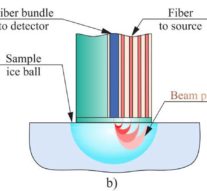Quality Estimation of Dry Grinding of Skiving Cutters With Organic Bonding Diamond Wheels
Научная библиотека 27.03.2017 Комментариев к записи Quality Estimation of Dry Grinding of Skiving Cutters With Organic Bonding Diamond Wheels нетA V Filippov, N N Shamarin, O A Podgornykh, V E Rubtsov1 // IOP Conference Series: Materials Science and Engineering. — 2016. — Vol. 142 : Innovative Technologies in Engineering : VII International Scientific Practical Conference, 19–21 May 2016, Yurga, Russian Federation : [proceedings]. — [012099, 7 p.].
Abstract. Engineering process preparation requires proper preparation of cutting tools. It influences not only the performance of the tools but also the quality of workpiece surface machining. One of the promising environmentally friendly trends of mechanical treatment is grinding without using lubricating cooling liquid. This method can considerably influence the quality of cutting tools grinding. Smoothing skiving turning is an effective treatment method providing high efficiency and workpiece quality. Proper preparation of cutting edges is especially important in this process. For that purpose we have carried out a research in grinding changeable carbide inserts for skiving turning by means of grinding wheels with different grain size. The influence of different combinations of wheels on roughness of the inserts front and rear surfaces and quality of cutting edge was studied with the help of laser confocal microscopy.
1. Introduction
Preparation of the tool surface and cutting edge is one of the key problems on the engineering process preparation [1-3]. It is generally known that providing proper preparation of the tools is an essential prerequisite of their effective application for machining operations [4, 5].
Machining without using lubricating cooling fluid called dry-cutting is one of ecologicallyfriendly machining methods [6, 7]. Alongside with dry cutting, dry grinding which is a process of grinding without lubricating cooling fluid attracts attention of researchers [8-12].
Skiving turning is a relatively new method of mechanical treatment which became spread due to a number of researches done in 70s-90s of the last century [13-16]. Based on these and some more recent works [17-20] we can determine a number of distinctive features of machining with skiving cutters which distinguish skiving turning from the conventional process (turning using a cutter with the tip):
1. Skiving cutters as they are called in [13-16] have no tip as a material body.
2. Bevel turning with a rectilinear skiving cutter produces one-sheeted hyperboloid of revolution while turning and boring with an elliptic skiving cutter provides a quartic surface [17-19].
3. When in the process of bevel turning the edge of a skiving cutter is set at an angle (ω) to the workpiece rotation axis a wide range of cutting edge geometries along the working area of the cutting edge tip is produced [20].
4. Cross-cut section of the cut layer is characterized by cut layer thickness value much lower than cutting depth and feed while the same parameters of the cut layer width are much greater. Values of cross-cut section parameters depend not only on the feed, cutting depth and cutting edge shape but also on the workpiece diameter and the edge inclination angle [17-19].
The differences between skiving and conventional cutting identified above as well as the experimental research previously done [17-20] prove the necessity to carry out proper preparation of the cutting edge of a skiving cutter providing minimal possible radius of cutting edge tip round-off. The latest factor is greatly determined by the fact that when skiving cutters are used for finishing operations the cut-off layer has to be of a small width.
The width of the cut-off layer is changes from zero at contact boundary of the tip with the workpiece to some maximum value which also does not exceed some tens of microns.
The aim of this research is to determine conditions for proper preparation of cutting edge tip of changeable carbide inserts used for skiving by means of grinding by diamond wheels with different grain size without treatment with lubricating cooling liquid.
2. Methods of research
Triangle inserts TNMG-160408 M2 of AP10AT alloy were used for the research. Grinding of changeable carbide inserts was carried out on universal tool grinder 3Е642Е using dishshaped diamond wheels 5-0013 12А2-20 150-18-6-2-32 with organic bond В2-01 with 100% concentration of diamond powder АС4, АС6, АСН and grain size 100/80, 80/63 and 40/28
accordingly. Grinding powders АС4, АС6 are made of synthetic diamonds in which grains are separate crystals with developed surface, aggregates and crystal-jams. Micropowder ACH is made up of synthetic diamonds with high abrasive power. Organic bond В2-01 was chosen because it allows producing high quality grinding of carbide tools without treatment with lubricating cooling substance. Spindle revolutions per minute are 3,150. Table 1 shows feed
values in rough finishing and smoothing grinding.
Grinding was carried out on the front and rear surfaces of changeable carbide inserts.
Different combination of diamond wheels were applied in the process: the 1st wheel for rough grinding; the 1st and the 2d wheels for rough grinding followed by finishing operation; the 1st , the 2d wheels and the 3d wheels for successive rough, finishing and smoothing grinding; the 1st and the 3d wheels for rough and smoothing grinding. The latest combination is tested to analyze ways of make the grinding process more efficient.27
Полное содержание статьи: http://earchive.tpu.ru/bitstream/11683/34770/1/dx.doi.org-10.1088-1757-899X-142-1-012099.pdf



Leave a comment
You must be logged in to post a comment.